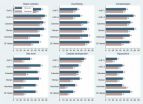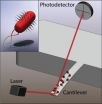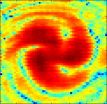(Press-News.org) DURHAM, N.H. – From the salmon-rich waters of Southeast Alaska to the white sand beaches of Florida's Gulf Coast to Downeast Maine's lobster, lumber and tourist towns, coastal residents around the U.S. share a common characteristic: their views about coastal environments divide along political lines. That's a primary finding of a new study by University of New Hampshire sociologists published this month in the journal Society & Natural Resources.
"We found a lot of environment-related differences from place to place to place. Each environment is different so that's just what you'd expect. But underneath there's a common pattern: partisanship," says Lawrence Hamilton, professor of sociology at UNH and lead author of the paper. "On almost every issue in every place, Democrats express greater concern about environmental problems than Republicans."
"From other research we knew there might be party-line divisions, but we didn't realize they would be so pervasive on coastal issues, down to local scale," he adds.
On 35 out of 36 comparisons in one analysis, Democrats were more likely than Republicans to see environmental problems as a serious threat. The partisan gap was the widest, ranging from 21 to 42 points, on a survey question related to climate change: concern about sea-level rise. Yet even on more local issues widely agreed to be serious – seafood contamination in the Pacific Northwest, for instance, or coastal development in Florida – partisan divides exist.
The study provides a broad comparative look, the first of its kind, at how residents of different coastal areas view the challenges and threats to their unique environment. The researchers synthesized data from surveys of attitudes on coastal or marine environmental problems from eight U.S. coastal regions: Downeast Maine, Gulf Coast Florida, Gulf Coast Louisiana, Columbia River in Oregon and Washington, Puget Sound and Olympic Peninsula in Washington, Ketchikan and Southeast Alaska. The surveys reflect the viewpoints of more than 7,000 interview subjects.
While the political divide on environmental issues was common across geographic regions, Hamilton and co-author Thomas Safford, associate professor of sociology at UNH, found distinct regional responses to various issues. Some differences are general: in areas of high unemployment, for instance, there was less concern about global warming issues. Where employment in resource industries like fishing was high, concern about environmental issues affecting those resources was similarly high. And where population growth is high, respondents expressed more concern about coastal development.
"If they're paving over your favorite beach, you might think we need some new rules," Hamilton explains.
Other responses were unique by region or, in some cases, within a region. On the Gulf Coast, for example, development was a prime concern in tourist-heavy Florida, while Louisianans, surveyed during the Deepwater Horizon blowout, were very concerned about beach pollution and seafood contamination. "They're close to each other, but they're geographically different," says Hamilton. "You find these place-to-place effects that are tied to local environment–society relationships."
Hamilton surmises that the divide between Democrats and Republicans on local as well as global coastal issues speaks to increasing fidelity to party ideology, particularly as it relates to government intervention. "If something is a problem, whether it's overfishing or sea level rise or beach pollution, maybe something should be done," he explains. "For most of those, it's hard to imagine who could do that other than government. If you reject government regulation as a solution, you work backwards to say it's not a problem."
He also suspects that polarization over climate change, which he documented in a Carsey School of Public Policy brief earlier this year, has bled over into other environmental issues. "There are people who think simply, 'If Al Gore's for it, then I'm against it,'" he says.
Hamilton notes that the partisan divide on environmental issues is a relatively new phenomenon. Much of the landmark environmental regulation of past decades – the Clean Air, Clean Water, and Endangered Species acts – were passed with bipartisan support. Now, policy on coastal environmental issues is likely to be stymied by the deep political division.
"Anyone who's trying to manage resources now is aware of how hard it is to get public support for anything that inconveniences anybody. And now there are these automatic political fault lines," Hamilton says, adding that other data from this study could help. "Understanding local place effects could help to offset the otherwise immobilizing force of partisanship in building public support for science-based marine policies."
INFORMATION:
The paper, "Environmental Views from the Coast: Public Concern about Local to Global Marine Issues," has been published online by the journal Society & Natural Resources, and is available free (until Dec. 31, 2014) here: http://www.tandfonline.com/doi/full/10.1080/08941920.2014.933926.
This work was supported by grants from the USDA Rural Development program, U.S. Environmental Protection Agency, National Oceanographic and Atmospheric Administration, Ford Foundation, Kellogg Foundation, and at the University of New Hampshire by the College of Liberal Arts, Carsey School of Public Policy, and vice provost for research. All sampling and interviews were done by the UNH Survey Center.
The University of New Hampshire, founded in 1866, is a world-class public research university with the feel of a New England liberal arts college. A land, sea, and space-grant university, UNH is the state's flagship public institution, enrolling 12,300 undergraduate and 2,200 graduate students.
Politics divide coastal residents' views of environment, UNH research finds
From sea to shining sea, Democrats more concerned about environmental problems
2014-09-16
ELSE PRESS RELEASES FROM THIS DATE:
Artworks are people!
2014-09-16
Not all things are created equally. We don't view a Picasso sculpture in the same way we look at a hammer, for example — no matter how fancy the hammer.
The reason? We see the Picasso more as a person than an object, according to new research from the University of Chicago Booth School of Business.
And in some cases, we make distinctions between artworks — say, an exact replica of a piece created by the artist, versus one created by a different artist.
Art, in other words, is an extension of the creator, write Professor Daniel M. Bartels of Chicago Booth, and Professor ...
For electronics beyond silicon, a new contender emerges
2014-09-16
Cambridge, Mass. – September 16, 2014 – Silicon has few serious competitors as the material of choice in the electronics industry. Yet transistors, the switchable valves that control the flow of electrons in a circuit, cannot simply keep shrinking to meet the needs of powerful, compact devices; physical limitations like energy consumption and heat dissipation are too significant.
Now, using a quantum material called a correlated oxide, Harvard researchers have achieved a reversible change in electrical resistance of eight orders of magnitude, a result the researchers ...
NASA's Global Hawk and satellites investigating Hurricane Edouard today
2014-09-16
The unmanned Global Hawk aircraft that's part of NASA's airborne Hurricane and Severe Storm Sentinel, or HS3 mission was winging its way to Hurricane Edouard on September 16. In addition to the Global Hawk, various NASA satellites are continually providing data on the Atlantic hurricane.
Scientific instruments aboard NASA's remotely piloted Global Hawk aircraft have been studying the hurricane over the last couple of days, and the Global Hawk returned to Edouard again today, September 16. Two of the instruments aboard the Global Hawk that will study Edouard are the S-HIS ...
Cancer patients with malignant spinal cord compression have preserved mobility
2014-09-16
San Francisco, September 15, 2014—Mobility is equally preserved in cancer patients suffering from malignant spinal cord compression (MSCC) who receive a single dose of 10 Gy of radiation therapy (RT), compared to patients who receive five daily doses of 4 Gy of RT each, according to research presented today at the American Society for Radiation Oncology's (ASTRO's) 56th Annual Meeting.
Malignant spinal cord compression (MSCC) is a complication of metastatic cancer mostly with bone involvement that occurs when a tumor's secondary deposit presses on the spinal cord and ...
And so they beat on, flagella against the cantilever
2014-09-16
WASHINGTON D.C., September 16, 2014 – A team of researchers at Boston University and Stanford University School of Medicine has developed a new model to study the motion patterns of bacteria in real time and to determine how these motions relate to communication within a bacterial colony.
The researchers chemically attached colonies of Escherichia coli bacteria to a microcantilever – a microscopic beam anchored at one end, similar to a diving board – thus coupling its motion to that of the bacteria. As the cantilever itself isn't doesn't generate any vibrations, or 'noise,' ...
NASA sees Tropical Storm Odile knocking at US Southwest
2014-09-16
Tropical Storm Odile continues to drench western Mexico and has now entered into the U.S. Southwest. On September 15, NASA's Terra satellite saw Odile's northernmost edge crossing the Mexican border into southern California. NOAA's GOES-East satellite on September 16 showed Odile's outer bands were already bringing storms to southern Arizona.
NASA Sees Odile Knocking on U.S. Border
On Sept. 15 at 2:35 p.m. EDT, the Moderate Resolution Imaging Spectroradiometer instrument aboard NASA's Terra satellite saw the northern fringes of Hurricane Odile straddling the border ...
Scientists twist radio beams to send data
2014-09-16
Building on previous research that twisted light to send data at unheard-of speeds, scientists at USC have developed a similar technique with radiowaves, reaching high speeds without some of the hassles that can go with optical systems.
The researchers, led by electrical engineering professor Alan Willner of the USC Viterbi School of Engineering, reached data transmission rates of 32 gigabits per second across 2.5 meters of free space in a basement lab at USC.
For reference, 32 gigabits per second is fast enough to transmit more than 10 hour-and-a-half-long HD movies ...
Kessler Foundation scientists link slowed processing speed with executive deficits in MS
2014-09-16
West Orange, NJ. September 16, 2014. Kessler Foundation researchers have published a study supporting the role of slowed processing speed in the executive deficits found in individuals with multiple sclerosis (MS). "Does slowed processing speed account for executive deficits in multiple sclerosis? Evidence from neuropsychological performance and structural neuroimaging," was published online ahead of print on August 18 by Rehabilitation Psychology The authors are Victoria Leavitt, PhD, of the Manhattan Memory Center, formerly of Kessler Foundation. Co-authors are Foundation ...
Tornadoes occurring earlier in 'Tornado Alley'
2014-09-16
WASHINGTON, D.C. – Peak tornado activity in the central and southern Great Plains of the United States is occurring up to two weeks earlier than it did half a century ago, according to a new study whose findings could help states in "Tornado Alley" better prepare for these violent storms.
Tornado records from Nebraska, Kansas, Oklahoma, and northern Texas – an area of high tornado activity dubbed "Tornado Alley" -- show that peak tornado activity is starting and ending earlier than it did 60 years ago.
Peak tornado activity, which occurs in the region from early ...
Water-based nuclear battery developed by MU can be used to generate electrical energy
2014-09-16
COLUMBIA, Mo. – From cell phones to cars and flashlights, batteries play an important role in everyday life. Scientists and technology companies constantly are seeking ways to improve battery life and efficiency. Now, for the first time using a water-based solution, researchers at the University of Missouri have created a long-lasting and more efficient nuclear battery that could be used for many applications such as a reliable energy source in automobiles and also in complicated applications such as space flight.
"Betavoltaics, a battery technology that generates power ...
LAST 30 PRESS RELEASES:
Scalable and healable gradient textiles for multi‑scenario radiative cooling via bicomponent blow spinning
Research shows informed traders never let a good climate crisis go to waste
Intelligent XGBoost framework enhances asphalt pavement skid resistance assessment
Dual-function biomaterials for postoperative osteosarcoma: Tumor suppression and bone regeneration
New framework reveals where transport emissions concentrate in Singapore
NTP-enhanced lattice oxygen activation in Ce-Co catalysts for low-temperature soot combustion
Synergistic interface engineering in Cu-Zn-Ce catalysts for efficient CO2 hydrogenation to methanol
COVID-19 leaves a lasting mark on the human brain
Scientists use ultrasound to soften and treat cancer tumors without damaging healthy tissue
Community swimming program for Black youth boosts skills, sense of belonging, study finds
Specific depressive symptoms in midlife linked to increased dementia risk
An ‘illuminating’ design sheds light on cholesterol
Who is more likely to get long COVID?
Study showcases resilience and rapid growth of “living rocks”
Naval Research Lab diver earns Office of Naval Research 2025 Sailor of the Year
New Mayo-led study establishes practical definition for rapidly progressive dementia
Fossil fuel industry’s “climate false solutions” reinforce its power and aggravate environmental injustice
Researchers reveal bias in a widely used measure of algorithm performance
Alcohol causes cancer. A study from IOCB Prague confirms damage to DNA and shows how cells defend against it
Hidden viruses in wastewater treatment may shape public health risks, study finds
Unlock the power of nature: how biomass can transform climate mitigation
Biochar reshapes hidden soil microbes that capture carbon dioxide in farmland
Reducing saturated fat intake shows mortality benefit, but only in high-risk individuals
Manta rays create mobile ecosystems, study finds
Study: Mixed results in using lipoic acid to treat progressive multiple sclerosis
Norbert Holtkamp appointed director of Fermi National Accelerator Laboratory
New agentic AI platform accelerates advanced optics design
Biologists discover neurons use physical signals — not electricity — to stabilize communication
Researchers discover that a hormone can access the brain by hitchhiking
University of Oklahoma researcher awarded funding to pursue AI-powered material design
[Press-News.org] Politics divide coastal residents' views of environment, UNH research findsFrom sea to shining sea, Democrats more concerned about environmental problems







